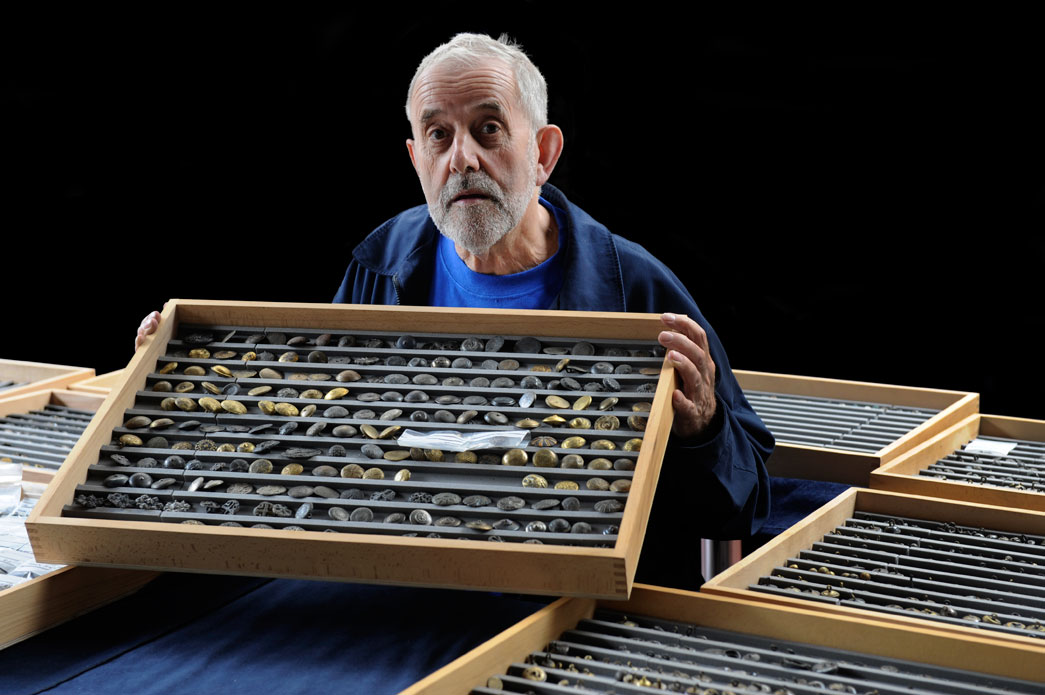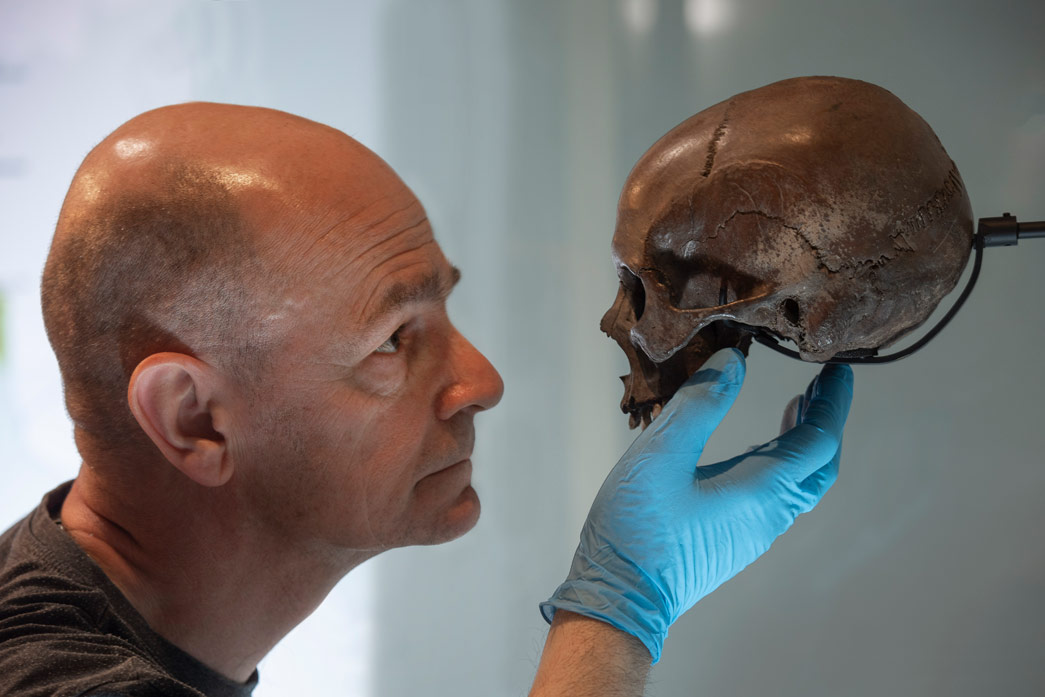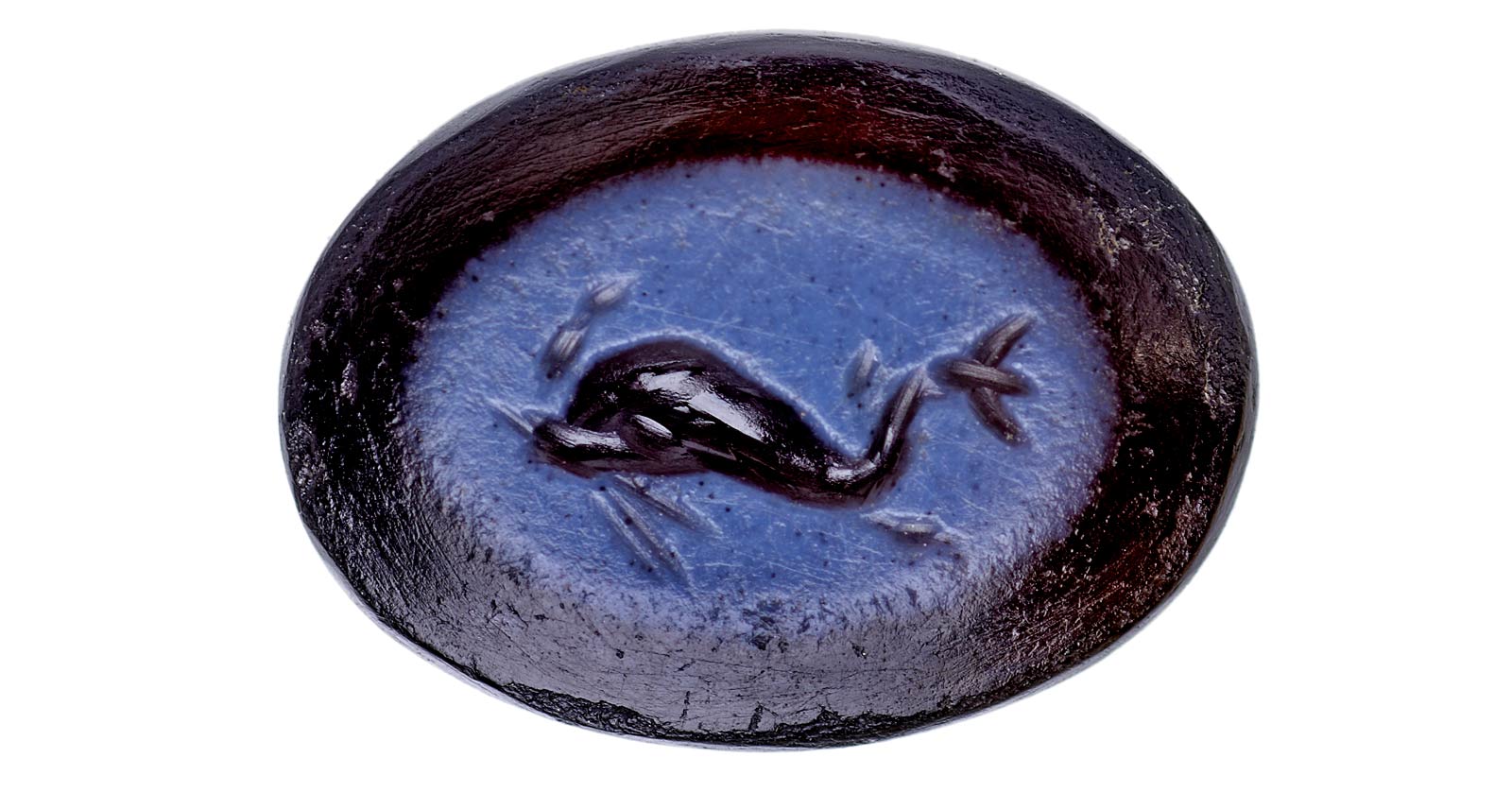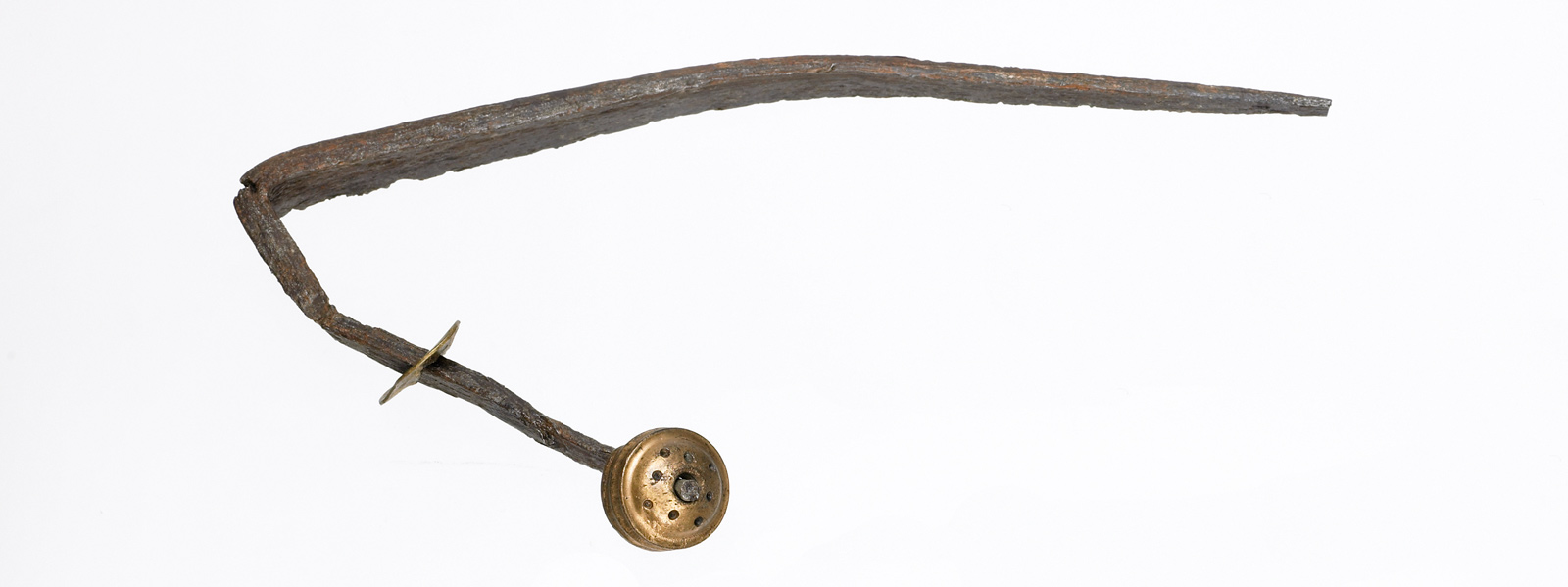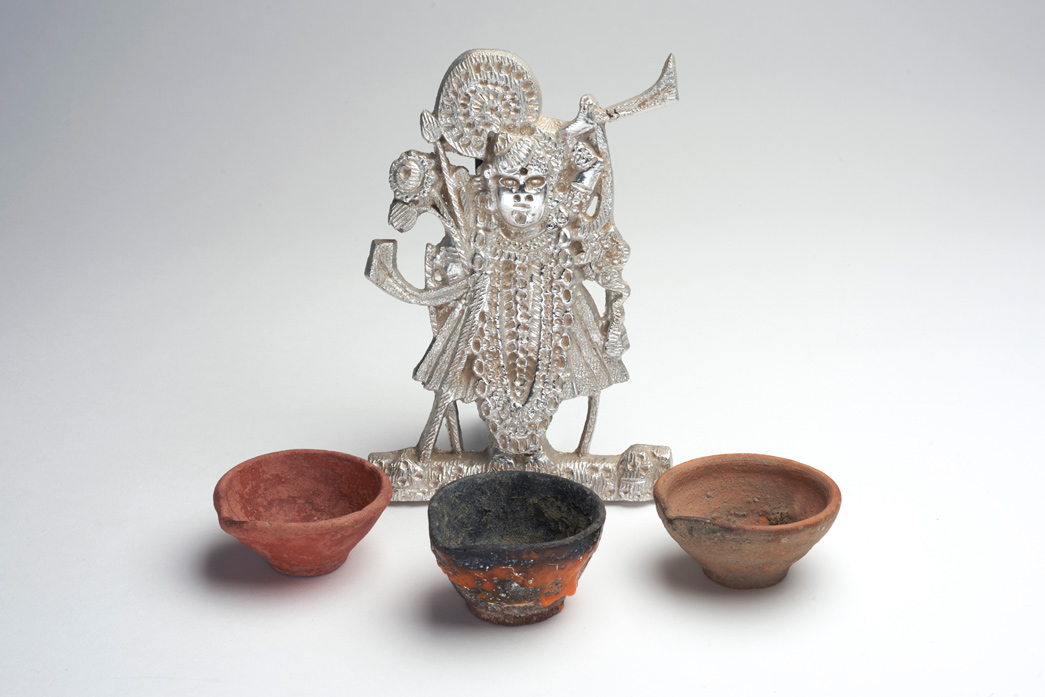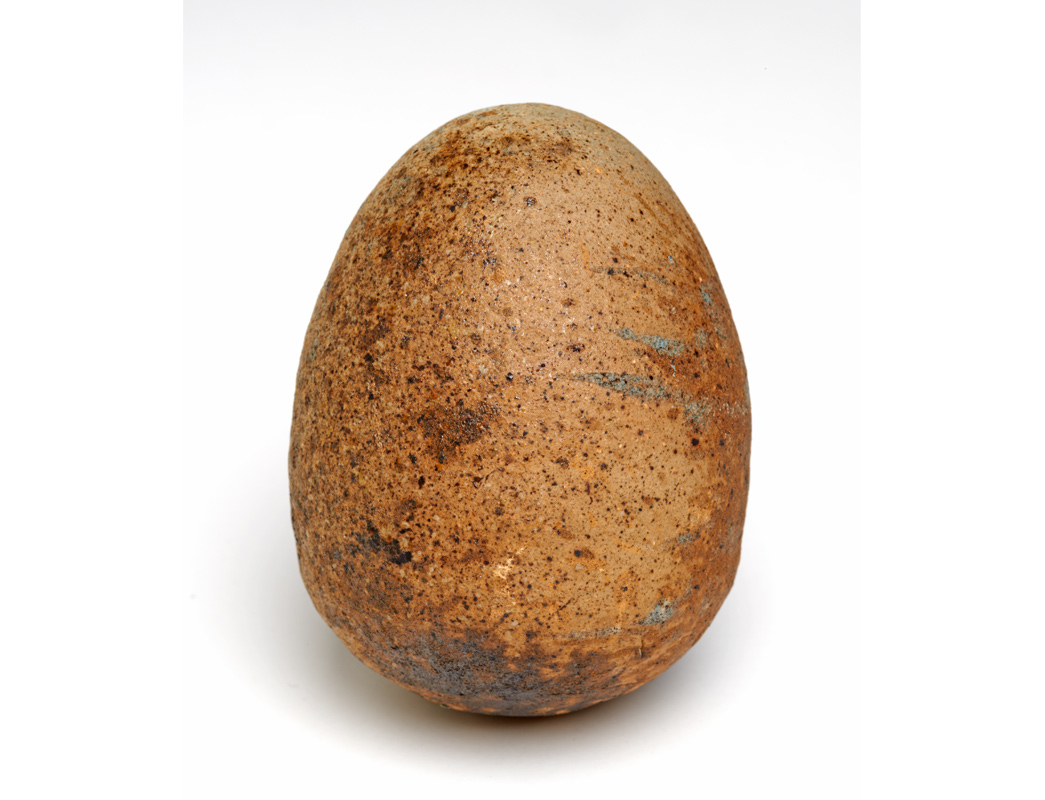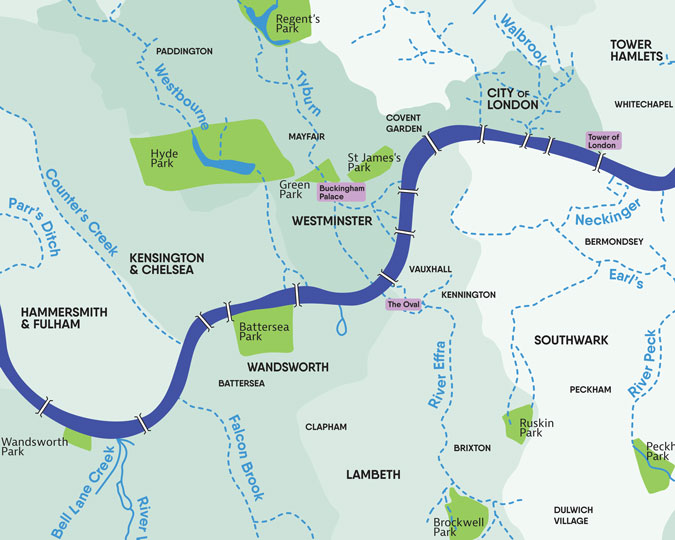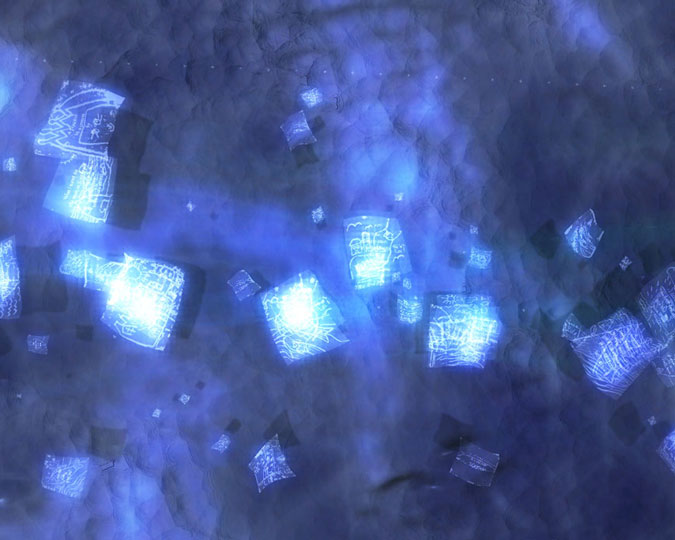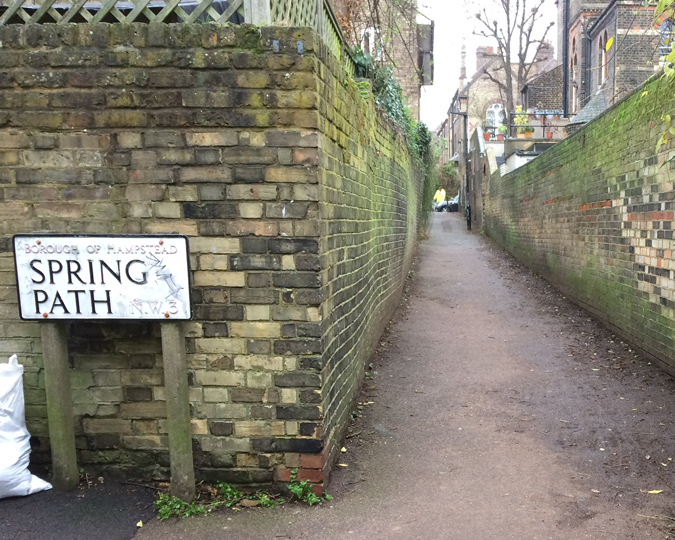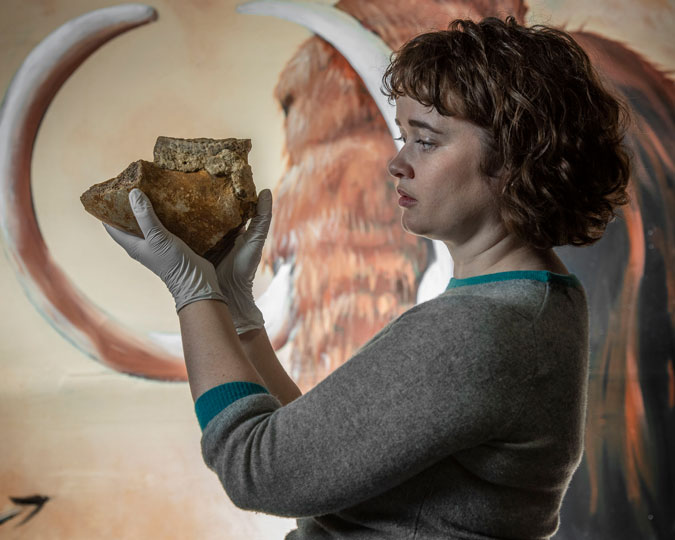Finding ancient artefacts on the banks of the river Thames? That's the dream of London's mudlarks, enthusiasts who comb the foreshore looking for historic objects. Let's look at their discoveries.
6 April 2021: we bring you this article from our archives to celebrate the hidden gems of London and our collections.
The River Thames flows through the heart of London, forming a backdrop to the lives of busy Londoners. It has been this way for thousands of years. The river has witnessed the birth and growth of London and the many, many people that have passed through have all left traces of their lives and activities behind.
The river has been described as London’s longest archaeological site and each tide reveals historic artefacts and structures. The Thames Discovery Programme document these structures, and today’s mudlarks search for the artefacts recording them with the Portable Antiquities Scheme. The Museum of London have worked with the mudlarks since the 1970s to document the changing Thames foreshore and to record the finds.
Dirty history
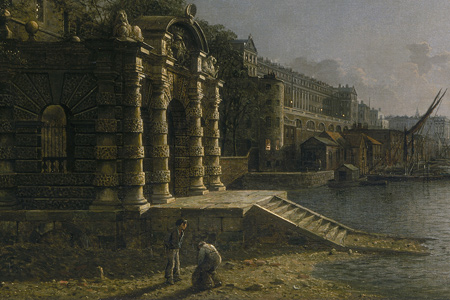
Mudlarks combing the Thames foreshore, c. 1845
Detail from York Water Gate and the Adelphi from the River, by Moonlight, Henry Pether
The original mudlarks had a very different motivation. In the 18th and 19th centuries, desperately poor Londoners would eke a living from selling scraps salvaged from the foreshore. Henry Mayhew, the social commentator, describes the mudlarks in the mid-19th century as ‘compelled from utter destitution to seek for the means of appeasing their hunger in the mud of the river’.
They ranged from the very young to the elderly. They were looking for lumps of coal, rope, bones, iron or copper – anything that could be sold. The mudlarks were facing utter poverty and had no other means of earning a living. The river at this time was a horribly polluted, disease-carrying watercourse infamous for ‘The Great Stink’.
Mudlarking as an activity is utterly transformed into today’s hobby of searching the foreshore. Modern mudlarks find the historic survivals which giveus clues about how Londoners have used the river throughout time: as a transport artery, a connection with the gods, a source of sustenance and as a rubbish bin.
Anyone searching for artefacts on the foreshore needs a permit from the Port of London Authority. All discoveries of potential archaeological interest must be reported to the Museum of London. The tireless work of enthusiastic mudlarks has immeasurably enriched our understanding of London's history.
Bones and jewels beneath the mud
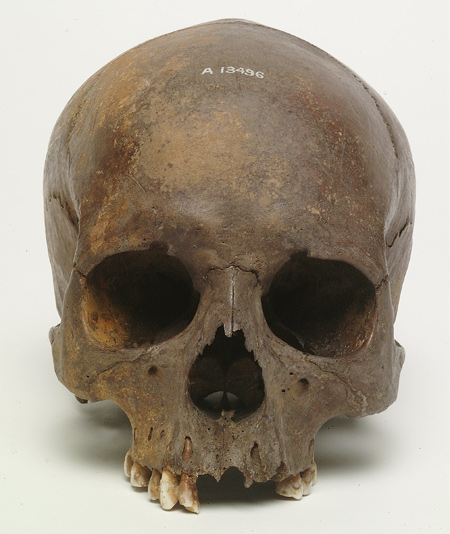
Early Bronze Age skull, 1900-1690 BC
Found on the foreshore at Mortlake.
Amongst the mud, stones and detritus on the foreshore there are many bones, most are from animals but some are human. All human remains must be reported to the police and the Museum of London. Over 250 ancient human skeletal remains have been found along the Thames in London. The majority are crania (skulls without the lower jaw bone) from the prehistoric period. Many of these, approximately 43 individuals, were found in Mortlake. This is more than any other Thames location.
London’s river valleys provided a focus for human activity, including burials. These were susceptible to flooding and the bones washed out from their graves. The water current affects bones in different ways: crania roll and often travel quite some distance. The evidence suggests the large number of crania in Mortlake may be due to the river moving them over a long period of time rather than them being deliberately placed there.
This cranium is probably from a female who was 18-25 years old when she died. Close examination revealed polishing on the cranial vault (top of the skull), scraping on the bone edges, frontal tooth loss and stones wedged in the ear canal, which are all signs of river movement. The bone also has iron staining, which indicates it has spent a significant amount of time in a watery environment.
Bent and buried blades
This dagger has been deliberately damaged. It is one of several bent blades found near Blackfriars. In medieval London, the Worshipful Company of Cutlers oversaw the cutlery trade, including bladed weapons. They maintained the manufacturing standards and had the power to seize sub-standard goods and issue fines. Were these bent knives and daggers confiscated? Were they publicly destroyed and thrown into the Thames?
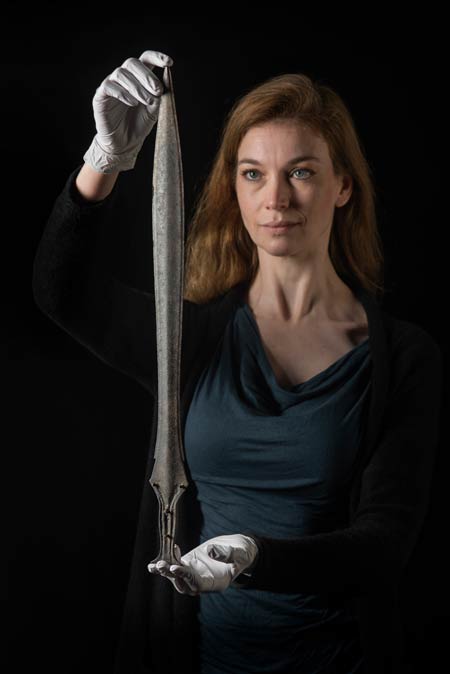
Curator Kate Sumnall holding a Bronze Age sword
Some of the objects found in the Thames were high-quality, valuable possessions that would not have been lightly thrown away. We believe that many were deliberately placed into the water, sacrifices in search of divine aid. Just as the river marks the boundary between land and water, many cultures from prehistory to the modern day have seen them as separating the physical and spiritual worlds.
This copper-alloy sword is one of 180 Bronze Age blades in the museum’s collection. Around half come from the Thames in west London. This cluster of findspots may reflect changing places of deposition, perhaps in response to way that the reach of the tides have moved along the river over the ages. Today the Thames is tidal up to Teddington Lock, but this has fluctuated through time due to environmental factors. Changing water levels would have had a huge impact on riverside communities. Could these bladed weapons represent a spiritual way of ‘fighting’ back the waters?
These sacred objects were found on the foreshore at Bermondsey, and show that the river Thames still has a role in religious rituals today. These are a metal statuette of the Hindu god Vishnu and three ceramic Diwali lamps.
There are seven sacred rivers the Hindu faith. In 1970 the Thames was blessed to become another sacred river. This means that it can be used for various religious rites. Many small objects relating to Hinduism have been discovered on the Thames foreshore. This statue depicts Vishnu, the preserver and protector of the universe. The River Ganges is said to flow from the toe of Vishnu.
The three lamps were used during Diwali, the Hindu festival of light. They would have been filled with vegetable oil or ghee with a cotton wick and used to light boundaries and entrances to houses. Lamps are also used during Hindu rituals around death. After use, these religious objects should be disposed of appropriately: this includes deposition into a sacred river.
Modern mysteries
This river egg was discovered by a mudlark searching the Thames foreshore for historic objects. It was one of several that have been found on the banks of the Thames since 2012. These eggs were a mystery, each one stamped with a unique number and ‘London’ this egg has the number ‘2664’. It is hollow and appears to be empty.
Research revealed the story behind these ceramic eggs. The anonymous artist, known as Anon, created 5,000 stoneware eggs in 2012. The eggs were fired in a wood-fired kiln. Stoneware has a speckled appearance and adds to the realistic appearance of these eggs. The eggs were made in a variety of sizes and reportedly some had another object placed inside. Once fired, the artist laid the eggs out in the shape of the Thames on the South Downs, Sussex. The final stage of the artistic installation involved placing the eggs into the Thames on Easter weekend 6-9 April 2012.
Gradually the mudlarks and other visitors to the Thames foreshore found these eggs and reported them to the Portable Antiquities Scheme (PAS) at the Museum of London. The PAS works alongside the Port of London to support the permit system which requires anyone searching the foreshore to report their historic finds. The most fascinating aspect of this discovery was plotting the distance the eggs travelled with the tide; this example was found in Erith and was gifted to the Museum by the finder in 2013.
These objects were displayed in the Secret Rivers exhibition, which closed in October 2019.








